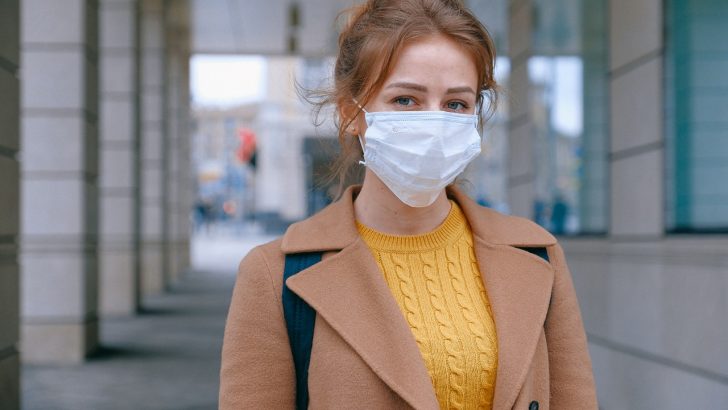As face coverings become mandatory in shops and public transport, Ruadhán Jones delves into the science on why they work and how to use them
Ireland has come quite late to the face-mask game, but as the threat of a second wave remains and a vaccine still appears to be far away, the Government has solidified its position on wearing masks. The Irish Government, following advice from the World Health Organisation (WHO), now recommends cloth masks for the general public.
As it stands, wearing face masks on public transport is already mandatory and it is to become mandatory in indoor spaces such as shops. Facemasks don’t need to be worn in the open air or while driving a car but should be worn routinely where physical distancing is not possible.
The revision of the Irish government’s position is in line with a growing global consensus on the value of mask wearing, including WHO.
Inconsistent messaging
The shifting guidance of WHO and the initially inconsistent messaging from the Irish Government sowed confusion in the general public. As a result, the wearing of masks has been the subject to much public debate on social media and a degree of rancour.
But some health experts say that the evidence is clear that masks can help slow the spread of Covid-19 and the more people wearing masks, the better. So, what is the evidence that health experts point to? What are the benefits of wearing masks and why has opinion shifted course?
Why WHO changed its position
As of April 6, WHO’s guidance was that masks need not be worn by healthy people, saying there is “no evidence that wearing a mask (whether medical or other types) by healthy persons in the wider community setting… can prevent them from infection with respiratory viruses, including Covid-19”.
Their argument was ostensibly that wearing masks would cause a false sense of security, leading people to neglect social distancing and hand washing guidelines. The guidance was also intended to protect supplies of medical masks for health care workers.
However, as more information was gathered about the spread of the virus, it became apparent that asymptomatic (without symptoms) and pre-symptomatic cases could also spread the virus. As a result, in June, WHO altered their guidance, recommending the wider use of masks as part of comprehensive “package of control”.
WHO now suggests that masks “can be used either for protection of healthy persons (worn to protect oneself when in contact with an infected individual) or for source control (worn by an infected individual to prevent onward transmission)”. They encourage targeted mask wearing, i.e. in areas of high traffic, like stores and other closed settings.
They warned that wearing masks alone would not be sufficient to prevent the spread of the virus. Earlier recommendations regarding social distancing, self-isolating for symptomatic cases and regular hand washing remain in place.
But many studies have put a premium on mask wearing as a means of combatting the virus, as a result of ever improving knowledge as to how the virus spreads.
How the virus spreads
There are two main ways scientists have discovered the virus spreads so far: through direct contact and through the spread of droplets through the air. The second instance is most relevant to mask wearing.
Compared with other viruses, Covid-19 produces an unusually high level of viral particles in the nose and mouth. As a result of the location of the particles, it is much easier for them to escape into the environment.
The release of particles into the environment is called viral shedding and researchers have found that people shed Covid-19 at an extremely high rate, similar to the seasonal flu. However, what makes Covid-19 more virulent is the fact that, unlike the flu, those who are pre- and asymptomatic can spread it.
Studies have shown that these particles carry the virus and, while the exact rate is hard to determine, particle transmission is considered the most likely explanation as to how those without symptoms are spreading covid-19.
A number of studies have shown that when people cough, talk, sing or engage in other similar activities, they propel drops of mucus and saliva through the air. According to WHO, “droplet transmission occurs when a person is in close contact (within 1 metre) with an infected person and exposure to potentially infective respiratory droplets occurs”.
In order to tackle pre- and asymptomatic transmission, mask wearing is the preferred method.
How masks work
In a simple laser-light-scattering experiment, the National Institute of Health (NIH) in the US demonstrated the many thousands of droplets we spread when saying a simple phrase. The screen lights up as droplets are ejected, with a maximum of 350 flashes and a minimum of 250.
Mask-wearing can help to reduce the transmission of Covid-19 through droplets”
This was the control sample: when they repeated the test with the speaker wearing a slightly dampened wash-cloth, “the flash count remained close to the background level”, indicating a decrease in the number of droplets.
In other words, when the speaker wore a mask, almost all the droplets were blocked. The NIH’s results are in line with a study of people with influenza or the common cold, which showed a significant reduction in the amount these viruses emitted in droplets when a mask was worn.
This suggests that, in conjunction with other protective measures, mask-wearing can help to reduce the transmission of Covid-19 through droplets. This being the primary form of transmission for pre- and asymptomatic cases, mask-wearing could help eradicate transmission from these cases.
These studies have found significant support in studies around the globe. A UK report suggests population-wide face mask use could push transmission down to controllable levels, and prevent further Covid waves when combined with minor lockdowns.
Similarly, a US study found if 80% of a closed population were to wear a mask, infection rates would drop to approximately one-twelfth the number of infections compared to “a live-virus population” in which no one wore masks.
Evidence from real-life
It is not only on the basis of scientific studies that these decisions are made; it also requires study of the real-life implications of wearing a mask. In fact, these so called “experiments of nature” are perhaps the strongest evidence in favour of mask-wearing.
There are a number of examples of such research. A study published in Health Affairs compared the infection growth rate in a number of US states before and after mask mandates. After five days, the study found, the growth rate reduced by 0.9 percentage points; after three weeks, it had slowed by 2.0.
This suggests that mask wearing led to a slowdown of growth in these regions, which became more apparent over time. Another study took a global perspective, analysing the mortality rates of 198 countries.
They concluded that “in countries with cultural norms or government policies supporting public mask-wearing, per-capita coronavirus mortality increased on average by just 8.0% each week, as compared with 54% each week in remaining countries”.
This, along with the data from controlled experiments, presents a strong case for wearing masks to combat the virus.
Droplets and aerosols
Much of the confusion regarding masks relates to how effective the cloth masks are the majority of the public will be wearing. While non-surgical masks are good at stopping larger droplets, they are not as effective at trapping micro-droplets such as aerosols (particles smaller than five micrometres in diameter).
The science suggests that no mask is going to be perfect against aerosols. But though this is the case, researchers have found that micro-droplets fell out of the air within 1.5 meters of the person who was wearing a mask, versus five meters for those not wearing masks.
Equally, the pre-existing research regarding the transmission of influenza through aerosols suggests that in the moist atmosphere between a person’s mouth and their mask, it takes nearly a hundred times as long for a droplet to evaporate and become an aerosol than if no mask was worn.
As such, the advice remains the same; while the use of masks is not a chimeric intervention, in conjunction with pre-existing advice such as hand-washing and social distancing, it appears to be the most effective weapon in restricting the virus’ spread.
Source protector versus prevention
How we frame the debate regarding masks contributes significantly to how we understand their effectiveness. Initially, the debate was focused on how effectively the mask prevented people from infection.
Now, it is focused on how wearing a mask prevents those infected from spreading the virus. While masks struggle to repel micro-droplets already hanging in the air, they are very good at reducing the creation of these micro-droplets, as I showed in the last section.
This suggests that masks are very effective as a form of source control – preventing those with the virus from spreading it.
By framing the debate about masks in terms of their effectiveness as PPE (personal protective equipment), we miss their vital utility as a means of preventing the spread of the virus.
How to wear a mask
How we wear our masks is almost as important as how they are made. Just because we are wearing a mask does not mean we are immune, and the efficacy of the mask significantly decreases depending on how we wear it and whether we’ve washed our hands, among other things.
Before, putting on your mask, clean your hands properly. Make sure the fabric is comfortable wearing and practice using it so you are comfortable putting it on and taking it off.
Cover your mouth and nose with, making sure there are no haps between the covering and your skin.
Tie it off securely to ensure it doesn’t slip. Ideally, you should carry the mask in a sealable waterproof bag, such as a Ziplock bag, and you should carry a second one to put used masks in.
These are the dos, but there are a few don’ts to remember as well. Try not to touch your mask or face covering while using it, as this can transfer virus particles from your surrounding environment to the mask.
Don’t share masks or discard them in public places. Finally, if you need to uncover your nose or mouth, such as to speak or eat, take the mask off and put it in the bag for used masks.
It’s advised not to use a damp or a wet medical mask or try to reuse it. You can reuse a cloth mask, so long as it is washed thoroughly or given time to disinfect. You don’t need to use disinfectant: washing daily in a hot wash over 60°C should be sufficient.
For more information about who should wear masks and when, go to https://www.gov.ie/en/publication/aac74c-guidance-on-safe-use-of-face-coverings/


 Ruadhán Jones
Ruadhán Jones
